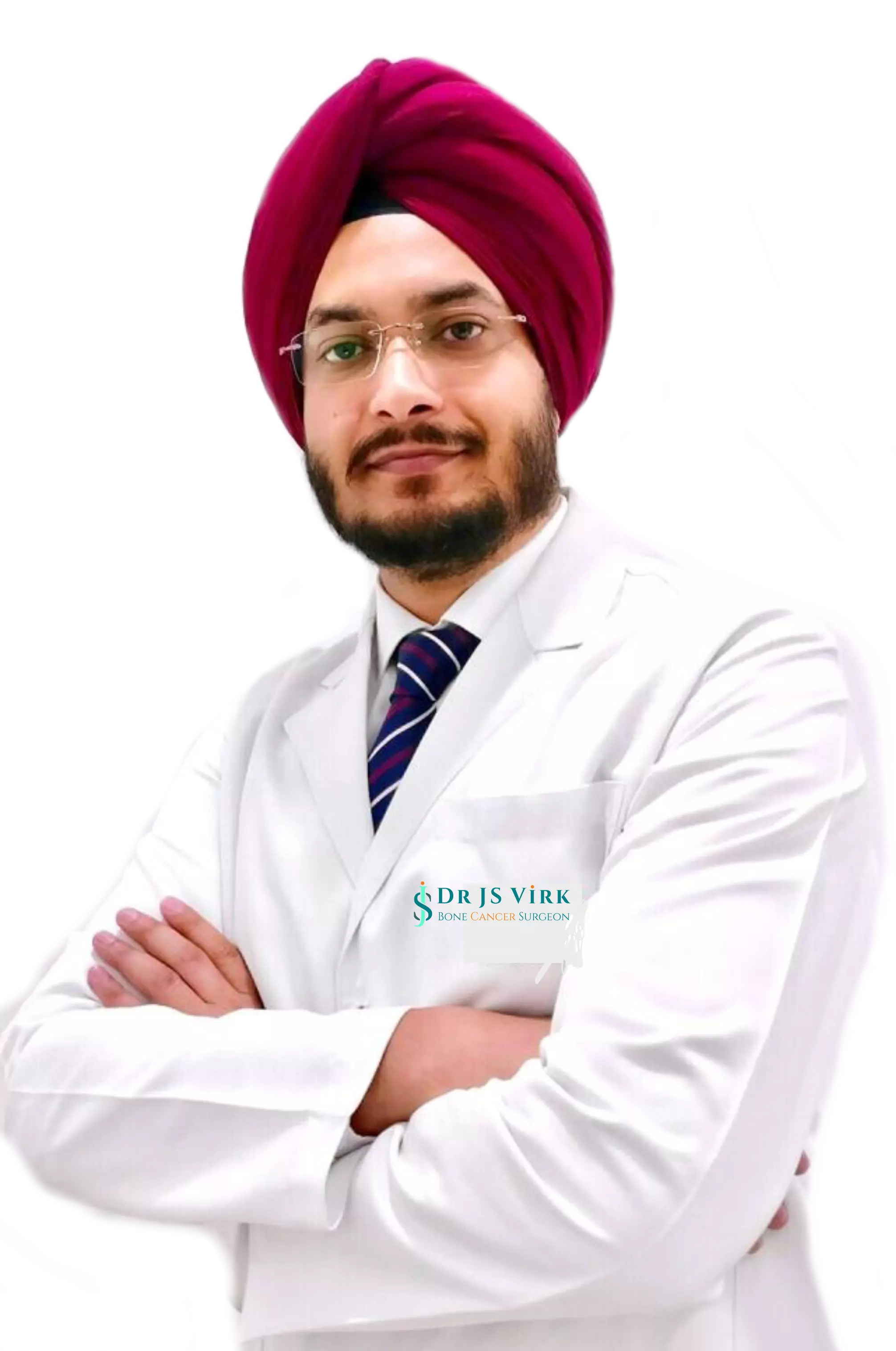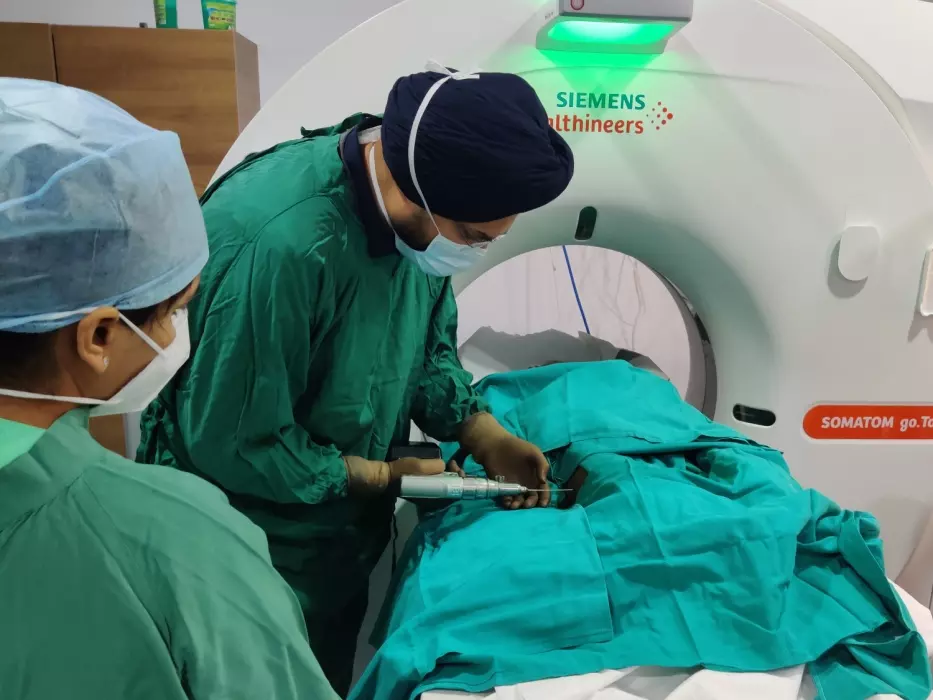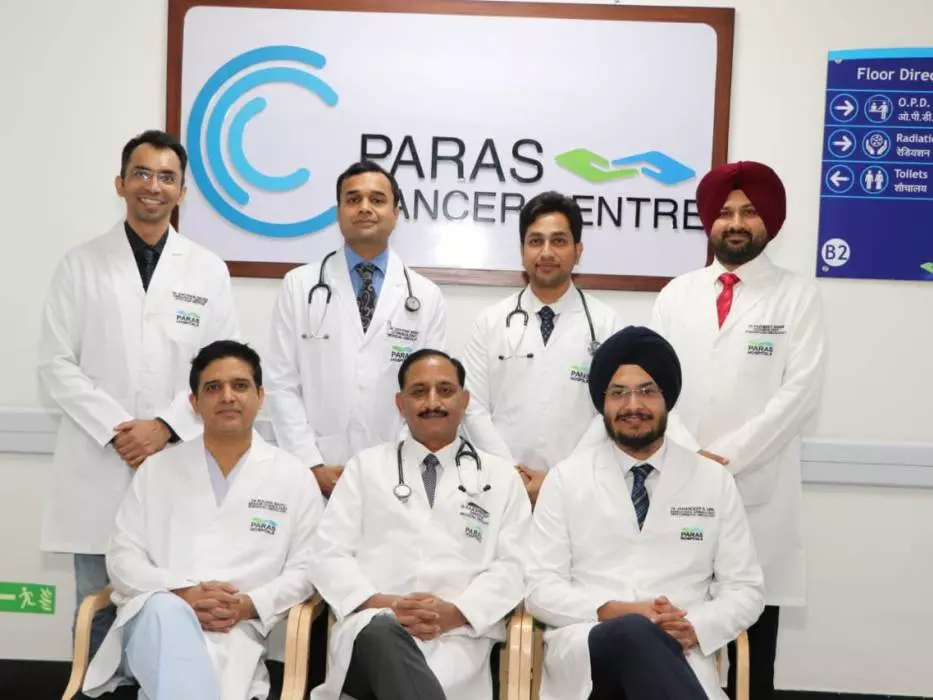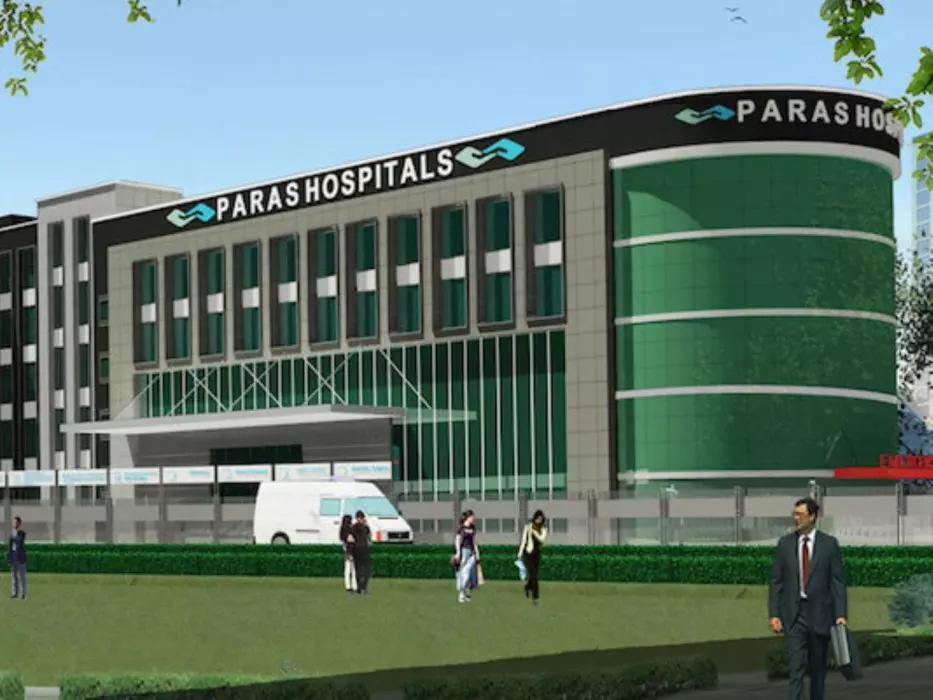Giant Cell Tumour is a non cancerous tumour that is generally seen in the long bones. Giant Cell Tumour or GCT is most common in the young adults in the age bracket of 20 – 40 years who have full grown skeleton. The most common site is at the end of bones like just above the knee. However, it can also form in other bones of arms, legs or even breast bones. In Giant Cell Tumour small individual cells combine together and give a view of large cells when seen under microscope. This is the reason it is called Giant Cell Tumour.
Although Giant Cell Tumour is a non cancerous or benign tumour of the bone but it is very aggressive in nature. Aggressive nature of the bone tumour means that it grows very rapidly and makes the bone weak. Due to the weakening of bone there are high chances that it could lead to fracture of bone. It is advisable to see a bone cancer specialist or surgeon who are the best orthopaedic surgeons with additional training to treat the bone tumours like Giant Cell Tumour.
Most of the symptoms of Giant Cell Tumour are similar to that of normal orthoapedic problems which may include:
![]() Pain in affected bone
Pain in affected bone
![]() Swelling in joint
Swelling in joint
![]() Visible tissue growth
Visible tissue growth
![]() Edema or fluid in the nearby joint
Edema or fluid in the nearby joint
![]() Limited movement in nearby joint
Limited movement in nearby joint
Diagnosis of almost all the bone related diseases can primarily be done on an X-ray. X ray gives an image of the bone and shows if there is any tumour or growth. If the orthopaedic cancer surgeon sees a growth then he may go ahead with advanced diagnostic investigation, which may include either a CT Scan or MRI scan or a biopsy. In some cases inorder to ensure that it’s not cancerous then instead of going for biopsy, doctor may opt for a nuclear medicine bone scan. So precisely following are the investigations that bone cancer surgeon may opt for to make a correct diagnosis:
![]() X-Ray
X-Ray
![]() CT Scan
CT Scan
![]() MRI
MRI
![]() Biopsy
Biopsy
![]() Nuclear Medicine Bone Scan
Nuclear Medicine Bone Scan
![]() PET CT
PET CT
Surgery is the primary treatment for Giant Cell Tumours. The main aim of the surgery in case of giant cell tumour is to remove the tumour and save the bone from further damage. In most of the cases Dr J S Virk at the hospital in Punjab prefers a wide margin excision of the tumour to ensure that there is no recurrence. Most complicated cases of GCT are the ones where there is recurrence of the Giant Cell Tumour. In case of recurrence of Giant Cell Tumour Dr J S Virk has managed to give the new lease of life to the patients by performing the limb salvage surgery. The only condition is that the tumour most not have ruptured. His success rate in the recurred GCT is very high. There are cases where surgery is not possible. In these cases Dr J S Virk opts for radiation therapy as a part of the treatment. In many cases patient needs reconstruction of the bone so patient may lead a normal life. Reconstruction is done either through a graft or patient specific implant.

Dr. JS Virk is one of the few Orthopaedic Onco Surgeons in India. After specializing in Orthopaedics, Dr Virk has done fellowships in Onco Surgery from Rajiv Gandhi Cancer Institute, New Delhi and in Reconstructive Surgery from Singapore General Hospital.
Dr. Virk has specialized in Limb Salvage Surgery for Bone Cancer Patients. Dr. JS Virk is currently working as Bone Cancer Surgeon at Paras Cancer Institute, Panchkula, Punjab. Dr Virk is a member of the Cancer Team which includes Medical Oncologists, Radiation Oncologists, Nuclear Medicine Physicians and Surgical Oncologists. Paras Cancer Institute has the most advanced facilities in the form of Linear Accelerator, Fully equipped Modular Operation Theatres, Cryotherapy and Chemotherapy.




Bone Cancer is a rare form of cancer but so are the bone cancer specialists. Very few orthopaedic surgeons choose to go in the field of Ortho Onco Surgery. Dr. JS Virk is of the few Ortho Onco Surgeons in India.
Lots of patients who are suspected to have any form of cancer are kept hanging in suspense due to the delays in testing and receiving the reports of the tests. This causes inexcusable delay in the commencement of the treatment.